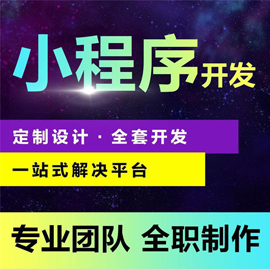微信小程序怎么實(shí)現(xiàn)藍(lán)牙鏈接
這篇文章主要介紹微信小程序怎么實(shí)現(xiàn)藍(lán)牙鏈接,文中介紹的非常詳細(xì),具有一定的參考價(jià)值,感興趣的小伙伴們一定要看完!

成都創(chuàng)新互聯(lián)公司堅(jiān)持“要么做到,要么別承諾”的工作理念,服務(wù)領(lǐng)域包括:網(wǎng)站制作、成都網(wǎng)站設(shè)計(jì)、企業(yè)官網(wǎng)、英文網(wǎng)站、手機(jī)端網(wǎng)站、網(wǎng)站推廣等服務(wù),滿足客戶于互聯(lián)網(wǎng)時(shí)代的靈璧網(wǎng)站設(shè)計(jì)、移動(dòng)媒體設(shè)計(jì)的需求,幫助企業(yè)找到有效的互聯(lián)網(wǎng)解決方案。努力成為您成熟可靠的網(wǎng)絡(luò)建設(shè)合作伙伴!
微信小程序之藍(lán)牙的鏈接
微信小程序藍(lán)牙連接2.0說(shuō)明:
1、本版本區(qū)分了ANDROID和IOS系統(tǒng)下藍(lán)牙連接的不同方式。
2、兼容了更多情況下的鏈接包括:
(1)未開(kāi)啟設(shè)備藍(lán)牙,當(dāng)監(jiān)聽(tīng)到開(kāi)啟了藍(lán)牙后自動(dòng)開(kāi)始連接。
(2)初始化藍(lán)牙失敗后每3000ms自動(dòng)重新初始化藍(lán)牙適配器。
(3)安卓端開(kāi)啟藍(lán)牙適配器掃描失敗,每3000ms自動(dòng)重新開(kāi)啟。
(4)IOS端獲取已連接藍(lán)牙設(shè)備為空,每3000ms自動(dòng)重新獲取。
(5)安卓端藍(lán)牙開(kāi)始鏈接后中斷掃描,連接失敗了,重新開(kāi)始掃描。
(6)IOS端開(kāi)始連接設(shè)備后,停止獲取已連接設(shè)備,連接失敗自動(dòng)重新開(kāi)啟獲取。
(7)連接成功后,關(guān)閉系統(tǒng)藍(lán)牙,藍(lán)牙適配器重置。
(8)連接成功后,關(guān)閉系統(tǒng)藍(lán)牙,再次打開(kāi)藍(lán)牙,自動(dòng)重新開(kāi)始連接。
(9)連接成功后,關(guān)閉目標(biāo)藍(lán)牙設(shè)備,自動(dòng)重新開(kāi)始掃描(獲取)。
(10)連接成功后,最小化小程序(連接未中斷),打開(kāi)小程序顯示已連接。
(11)連接成功后,殺掉小程序進(jìn)程,連接關(guān)閉,自動(dòng)重新開(kāi)始掃描(獲取)。
3、想起來(lái)了再來(lái)更新....。
4、流程圖,明天或后天或...誰(shuí)有空幫我畫(huà)一下也行。
我的連接是在App.js中做的。
在App.js中的onLaunch觸發(fā)是調(diào)用 init()方法。
init代碼:
init: function (n) {
this.list = [];
this.serviceId = "6E400001-B5A3-F393-E0A9-E50E24DCCA9E";
this.serviceId_2 = "00001803-0000-1000-8000-00805F9B34FB";
this.serviceId_3 = "00001814-0000-1000-8000-00805F9B34FB";
this.serviceId_4 = "00001802-0000-1000-8000-00805F9B34FB";
this.serviceId_5 = "00001804-0000-1000-8000-00805F9B34FB";
this.serviceId_6 = "00001535-1212-EFDE-1523-785FEABCD123";
this.characterId_write = "6E400042-B5A3-F393-E0A9-E50E24DCCA9E";
this.characterId_read = "6E400012-B5A3-F393-E0A9-E50E24DCCA9E";
this.connectDeviceIndex = 0;
this.isGettingConnected = false;
this.isDiscovering = false;
this.isConnecting = false;
this.connectedDevice = {};
console.log('init state', this.connectedDevice.state);
if (!this.connectedDevice.state || n == 200) {
this.connectedDevice.state = false;
this.connectedDevice.deviceId = '';
this.adapterHasInit = false
}
this.startConnect();
}說(shuō)明:
1、 serviceId_2~6 是我已知的想要連接的藍(lán)牙設(shè)備的serviceId可以只寫(xiě)一個(gè)。
2、characterId_write 是我已知的想要連接的藍(lán)牙設(shè)備寫(xiě)入數(shù)據(jù)的特征值。
3、characterId_read是我已知的想要連接的藍(lán)牙設(shè)備讀取數(shù)據(jù)的特征值。
(以上3個(gè)都是為了做比對(duì),真實(shí)的操作按照獲取到的sericeid, characterid為準(zhǔn))。
4、connectedDevice 是已連接了的設(shè)備信息對(duì)象。
init完成后開(kāi)始調(diào)用連接 startConnect();
startConnect代碼:
startConnect: function () {
var that = this;
if (that.connectedDevice.state) return;
that.connectedDevice.deviceId = "";
that.connectedDevice.state = false;
// 如果適配器已經(jīng)初始化不在調(diào)用初始化(重復(fù)初始化會(huì)報(bào)錯(cuò))
if (this.adapterHasInit == undefined || this.adapterHasInit) return;
wx.showLoading({
title: '初始化藍(lán)牙',
duration: 2000
});
// 開(kāi)啟藍(lán)牙適配器狀態(tài)監(jiān)聽(tīng)
this.listenAdapterStateChange();
// 初始化藍(lán)牙適配器狀態(tài)(必須步驟,否則無(wú)法進(jìn)行后續(xù)的任何操作)
wx.openBluetoothAdapter({
success: function (res) {
console.log("初始化藍(lán)牙適配器成功");
that.getBluetoothAdapterState();
that.adapterHasInit = true;
},
fail: function (err) {
console.log(err);
wx.showLoading({
title: '請(qǐng)開(kāi)藍(lán)牙',
icon: 'loading',
duration: 2000
})
}
});
}說(shuō)明:這段有注釋,就不多說(shuō)了,比較簡(jiǎn)單。
在初始化藍(lán)牙適配器狀態(tài)成功后調(diào)用getBluetoothAdapterState()方法。
getBluetoothAdapterState代碼:
getBluetoothAdapterState: function () {
var that = this;
wx.getBluetoothAdapterState({
success: function (res) {
console.log(res);
var available = res.available;
that.isDiscovering = res.discovering;
if (!available) {
wx.showLoading({
title: '請(qǐng)開(kāi)藍(lán)牙',
icon: 'loading',
duration: 2000
})
} else {
if (!that.connectedDevice['state']) {
that.judegIfDiscovering(res.discovering);
}
}
},
fail: function (err) {
console.log(err);
}
})
}說(shuō)明:此方法是用來(lái)獲取當(dāng)前藍(lán)牙狀態(tài)。
當(dāng)檢測(cè)到藍(lán)牙可用時(shí)調(diào)用judegIfDiscovering方法。
judegIfDiscovering代碼:
judegIfDiscovering: function (discovering) {
var that = this;
if (this.isConnectinng) return;
wx.getConnectedBluetoothDevices({
services: [that.serviceId],
success: function (res) {
console.log("獲取處于連接狀態(tài)的設(shè)備", res);
var devices = res['devices'];
if (devices[0]) {
if (that.isAndroidPlatform) {
wx.showToast({
title: '藍(lán)牙連接成功',
icon: 'success',
duration: 2000
});
} else {
that.getConnectedBluetoothDevices(256);
}
} else {
if (discovering) {
wx.showLoading({
title: '藍(lán)牙搜索中'
})
} else {
if (that.isAndroidPlatform) {
that.startBluetoothDevicesDiscovery();
} else {
that.getConnectedBluetoothDevices(267);
}
}
}
},
fail: function (err) {
console.log('getConnectedBluetoothDevices err 264', err);
if (that.isAndroidPlatform) {
that.startBluetoothDevicesDiscovery();
} else {
that.getConnectedBluetoothDevices(277);
}
}
});
}說(shuō)明:
1、此方法是用來(lái)判斷是否正在掃描。
2、isAndroidPlatform 是通過(guò)小程序的getSystemInfo獲取到的判斷是安卓設(shè)備還是IOS設(shè)備。
如果是安卓設(shè)備調(diào)用startBluetoothDevicesDiscovery()開(kāi)啟掃描,如果是IOS設(shè)備調(diào)用getConnectedBluetoothDevices() 開(kāi)啟獲取已配對(duì)的藍(lán)牙設(shè)備。
startBluetoothDevicesDiscovery代碼:
startBluetoothDevicesDiscovery: function () {
var that = this;
if (!this.isAndroidPlatform) return;
if (!this.connectedDevice['state']) {
wx.getBluetoothAdapterState({
success: function (res) {
console.log(res);
var available = res.available;
that.isDiscovering = res.discovering;
if (!available) {
wx.showLoading({
title: '請(qǐng)開(kāi)藍(lán)牙',
icon: 'loading',
duration: 2000
})
} else {
if (res.discovering) {
wx.showLoading({
title: '藍(lán)牙搜索中'
})
} else {
wx.startBluetoothDevicesDiscovery({
services: [],
allowDuplicatesKey: true,
success: function (res) {
that.onBluetoothDeviceFound();
wx.showLoading({
title: '藍(lán)牙搜索中'
})
},
fail: function (err) {
if (err.isDiscovering) {
wx.showLoading({
title: '藍(lán)牙搜索中'
})
} else {
that.startDiscoveryTimer = setTimeout(function () {
if (!that.connectedDevice.state) {
that.startBluetoothDevicesDiscovery();
}
}, 5000)
}
}
});
}
}
},
fail: function (err) {
console.log(err);
}
})
}說(shuō)明:
1、僅在安卓端設(shè)備上開(kāi)啟掃描附近藍(lán)牙設(shè)備。
2、在開(kāi)啟成功的回調(diào)中開(kāi)啟發(fā)現(xiàn)新藍(lán)牙設(shè)備的事件監(jiān)聽(tīng)onBluetoothDeviceFound()。
onBluetoothDeviceFound代碼:
[mw_shl_code=javascript,true]onBluetoothDeviceFound: function () {
var that = this;
wx.onBluetoothDeviceFound(function (res) {
console.log('new device list has founded');
if (res.devices[0]) {
var name = res.devices[0]['name'];
if (name.indexOf('FeiZhi') != -1) {
var deviceId = res.devices[0]['deviceId'];
console.log(deviceId);
that.deviceId = deviceId;
if (!that.isConnecting) {
that.startConnectDevices();
}
}
}
})
}說(shuō)明:
1、此處對(duì)已發(fā)現(xiàn)的藍(lán)牙設(shè)備根據(jù)name屬性進(jìn)行了過(guò)濾。
2、當(dāng)篩選出含有需要連接的設(shè)備的name屬性的設(shè)備是獲取到deviceId,開(kāi)始連接調(diào)用startConnectDevices()方法。
startConnectDevices代碼:
startConnectDevices: function (ltype, array) {
var that = this;
clearTimeout(this.getConnectedTimer);
clearTimeout(this.startDiscoveryTimer);
this.getConnectedTimer = null;
this.startDiscoveryTimer = null;
this.isConnectinng = true;
wx.showLoading({
title: '正在連接'
});
that.stopBluetoothDevicesDiscovery();
wx.createBLEConnection({
deviceId: that.deviceId,
success: function (res) {
console.log('連接成功', res);
wx.showLoading({
title: '正在連接'
});
that.connectedDevice.state = true;
that.connectedDevice.deviceId = that.deviceId;
if (res.errCode == 0) {
setTimeout(function () {
that.getService(that.deviceId);
}, 5000)
}
wx.onBLEConnectionStateChange(function (res) {
console.log('連接變化', res);
that.connectedDevice.state = res.connected;
that.connectedDevice.deviceId = res.deviceId;
if (!res.connected) {
that.init('200');
}
});
},
fail: function (err) {
console.log('連接失敗:', err);
wx.hideLoading();
if (ltype == 'loop') {
array = array.splice(0, 1);
console.log(array);
that.loopConnect(array);
} else {
if (that.isAndroidPlatform) {
that.startBluetoothDevicesDiscovery();
} else {
that.getConnectedBluetoothDevices(488);
}
}
},
complete: function () {
that.isConnectinng = false;
}
});
}說(shuō)明:
1、開(kāi)啟連接后終止掃描(獲取已配對(duì))方法。
2、根據(jù)deviceId創(chuàng)建低功耗藍(lán)牙連接。如果連接成功,就繼續(xù)做后續(xù)讀寫(xiě)操作。
3、如果連接失敗根據(jù)設(shè)備系統(tǒng)分別調(diào)用startBluetoothDevicesDiscovery() 或 getConnectedBluetoothDevices();
getConnectedBluetoothDevices代碼:
getConnectedBluetoothDevices: function (n) {
var that = this;
that.isGettingConnected = true;
wx.showLoading({
title: '藍(lán)牙搜索中'
});
wx.getConnectedBluetoothDevices({
services: [that.serviceId],
success: function (res) {
console.log("獲取處于連接狀態(tài)的設(shè)備", res);
var devices = res['devices'],
flag = false,
index = 0,
conDevList = [];
devices.forEach(function (value, index, array) {
if (value['name'].indexOf('FeiZhi') != -1) {
// 如果存在包含F(xiàn)eiZhi字段的設(shè)備
flag = true;
index += 1;
conDevList.push(value['deviceId']);
that.deviceId = value['deviceId'];
}
});
if (flag) {
that.connectDeviceIndex = 0;
that.loopConnect(conDevList);
} else {
that.failToGetConnected();
}
},
fail: function (err) {
that.failToGetConnected();
},
complete: function () {
that.isGettingConnected = false;
}
});
}說(shuō)明:如果獲取藍(lán)牙已配對(duì)的藍(lán)牙設(shè)備失敗了,或獲取到的列表為空調(diào)用failToGetConnected();
failToGetConnected代碼:
failToGetConnected: function () {
var that = this;
if (!that.getConnectedTimer) {
clearTimeout(that.getConnectedTimer);
that.getConnectedTimer = null;
}
that.getConnectedTimer = setTimeout(function () {
wx.getBluetoothAdapterState({
success: function (res) {
console.log(res);
var available = res.available;
if (!available) {
wx.showLoading({
title: '請(qǐng)開(kāi)藍(lán)牙',
icon: 'loading',
duration: 2000
})
} else {
if (!that.connectedDevice['state']) {
that.getConnectedBluetoothDevices();
}
}
},
fail: function (err) {
console.log(err);
}
})
}, 5000);
}說(shuō)明:
1、該方法調(diào)用成功后返回的devices是一個(gè)數(shù)組包含多個(gè)已經(jīng)系統(tǒng)配對(duì)的藍(lán)牙設(shè)備。
2、如果devices列表獲取到調(diào)用loopConnect()方法開(kāi)始遞歸調(diào)用連接藍(lán)牙設(shè)備。
loopConnect代碼:
loopConnect: function (array) {
var that = this;
var listLen = array.length;
if (array[0]) {
that.deviceId = array[0];
if (!that.isConnecting) {
that.startConnectDevices('loop', array);
}
} else {
console.log('已配對(duì)的設(shè)備小程序藍(lán)牙連接失敗');
if (!that.isAndroidPlatform) {
that.getConnectedBluetoothDevices(431);
}
}
}說(shuō)明:looConnect在創(chuàng)建連接的方法連接失敗后會(huì)操作刪除數(shù)組的第一個(gè)值,然后繼續(xù)調(diào)用該方法,直到其中所有的設(shè)備都連接過(guò)。
差點(diǎn)漏了:在app.js的onShow里調(diào)用init()方法。
特別說(shuō)明:
1、安卓和IOS的藍(lán)牙連接在當(dāng)前版本中推薦采用不同方式。安卓設(shè)備直接使用小程序的藍(lán)牙連接,取消系統(tǒng)配對(duì)。IOS設(shè)備先系統(tǒng)配對(duì)在打開(kāi)小程序可以時(shí)效秒連接成功。
2、此版本的連接仍然有待完善,連接不會(huì)自動(dòng)終止(需要的可以自己加),會(huì)無(wú)限掃描重連,直到成功。
3、鏈接成功后的操作如果寫(xiě)入數(shù)據(jù)和開(kāi)啟notify需要同時(shí)進(jìn)行,建議先寫(xiě)入,后開(kāi)啟notify。
以上是“微信小程序怎么實(shí)現(xiàn)藍(lán)牙鏈接”這篇文章的所有內(nèi)容,感謝各位的閱讀!希望分享的內(nèi)容對(duì)大家有幫助,更多相關(guān)知識(shí),歡迎關(guān)注創(chuàng)新互聯(lián)行業(yè)資訊頻道!
當(dāng)前標(biāo)題:微信小程序怎么實(shí)現(xiàn)藍(lán)牙鏈接
網(wǎng)站路徑:http://www.yijiale78.com/article28/jdddcp.html
成都網(wǎng)站建設(shè)公司_創(chuàng)新互聯(lián),為您提供App開(kāi)發(fā)、網(wǎng)站導(dǎo)航、電子商務(wù)、Google、用戶體驗(yàn)、ChatGPT
聲明:本網(wǎng)站發(fā)布的內(nèi)容(圖片、視頻和文字)以用戶投稿、用戶轉(zhuǎn)載內(nèi)容為主,如果涉及侵權(quán)請(qǐng)盡快告知,我們將會(huì)在第一時(shí)間刪除。文章觀點(diǎn)不代表本網(wǎng)站立場(chǎng),如需處理請(qǐng)聯(lián)系客服。電話:028-86922220;郵箱:631063699@qq.com。內(nèi)容未經(jīng)允許不得轉(zhuǎn)載,或轉(zhuǎn)載時(shí)需注明來(lái)源: 創(chuàng)新互聯(lián)

- 動(dòng)態(tài)網(wǎng)頁(yè)SEO優(yōu)化怎么做? 2013-05-23
- 亞馬遜平臺(tái)做關(guān)鍵詞優(yōu)化教程 2013-07-31
- 如何通過(guò)數(shù)據(jù)分析來(lái)提升網(wǎng)站排名? 2015-08-21
- 做好站內(nèi)優(yōu)化,保證搜索引擎收錄 2017-02-28
- 網(wǎng)站導(dǎo)航如何SEO優(yōu)化? 2015-12-20
- 如何選擇網(wǎng)站搜索引擎優(yōu)化的關(guān)鍵詞? 2015-08-20
- 從網(wǎng)站營(yíng)銷的角度來(lái)建設(shè)網(wǎng)站 2016-11-04
- 網(wǎng)站點(diǎn)擊率與搜索引擎優(yōu)化排名 2014-01-03
- 影響成都網(wǎng)站優(yōu)化與用戶體驗(yàn)的元素有哪些呢? 2014-10-28
- 如何提高網(wǎng)站收錄量和網(wǎng)站權(quán)重? 2013-09-15
- 網(wǎng)站排名對(duì)于網(wǎng)站重要嗎 2013-05-06
- 【網(wǎng)站排名優(yōu)化】如何做好醫(yī)院的網(wǎng)絡(luò)營(yíng)銷? 2016-11-12